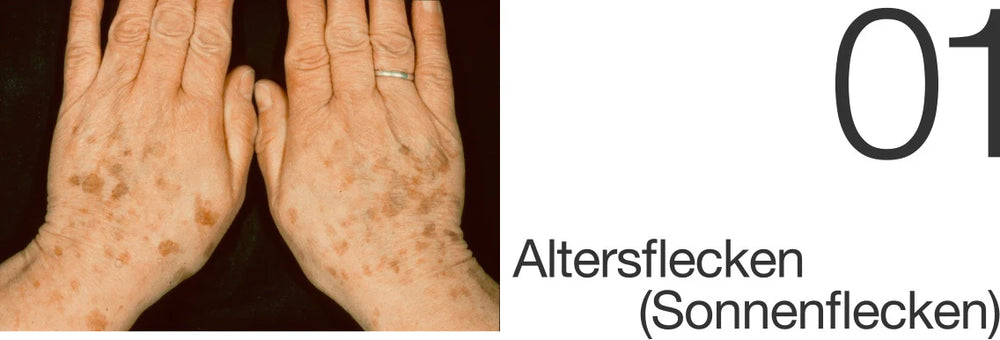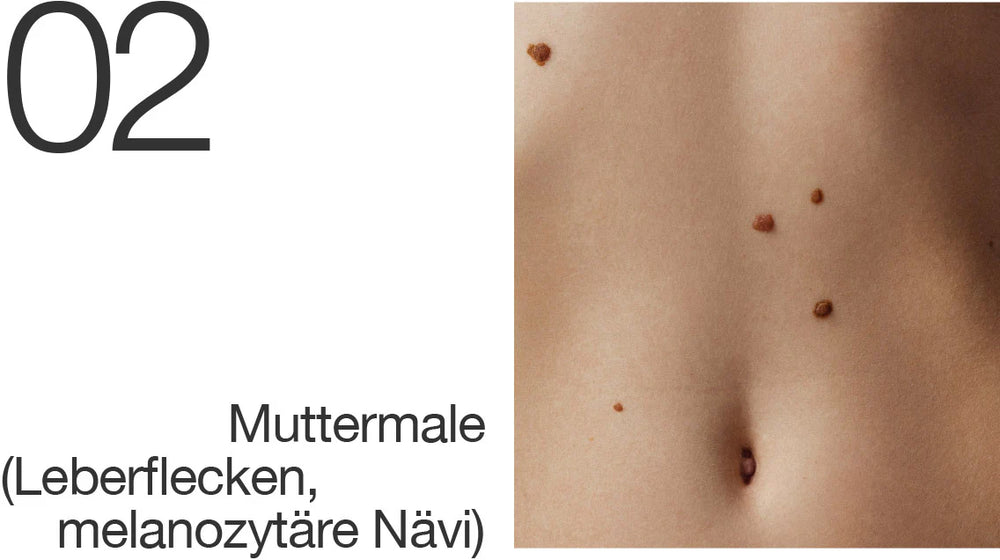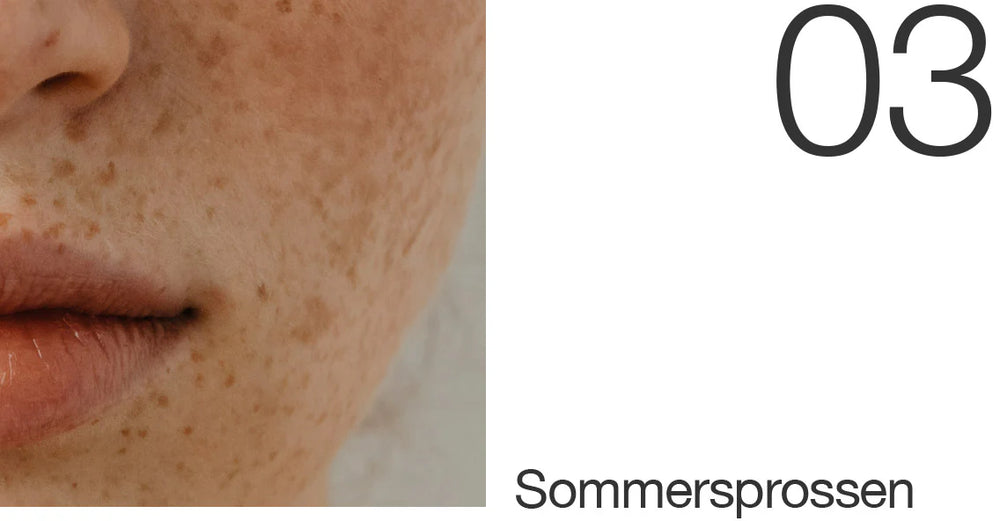
Skin spots - what to do?
Not all skin spots are created equal. If they are pigmented, they could be age spots, moles, freckles, or other, less common pigmentation.
Many people have pigmented (brown) spots on their skin since birth or develop them over the course of their lives. These spots can be health concerns or completely harmless, sometimes only cosmetically disturbing. The causes of their development vary widely, and every pigment spot that is not caused by external influences (e.g., a tattoo or after a burn has healed), but has always been there or appears to have developed spontaneously on the skin, should be assessed.

Age spots appear between the ages of 35 and 40 in areas that have been exposed to sunlight for years. They are therefore particularly common on the face, the back of the hands, the extensor sides of the forearms, and the décolleté. They are similar to age spots, which are slightly raised, but unlike these, they remain flat throughout life. In contrast to biological (endogenous or intrinsic) skin aging, age spots are a typical phenomenon of sunlight-induced (exogenous or extrinsic) skin aging and are an expression of an irregular pigment distribution in the covering cells of the epidermis. This means that age spots are not caused by a proliferation of pigment cells, unlike the liver spots or pigmented moles described below. Age spots are always benign and always remain benign, meaning that degeneration into malignant skin changes cannot occur with age spots. They have nothing in common with moles (liver spots, melanocytic nevi).
Conclusion : Liver spots or pigmented moles are usually harmless, but they must be checked at regular intervals and, if abnormalities or changes are found, they must be cut out and examined in the laboratory.

Pigment cells (melanocytes) are usually isolated and located on their own at the border between the epidermis and the dermis. They produce pigment (melanin) and release it to the epidermal cells, which then protect their sensitive cell nuclei from the sun's harmful UV rays. Moles (liver spots, melanocytic nevi) are usually brown or brownish-reddish pigmented (less frequently, skin-colored) and are caused by the fact that pigment cells (melanocytes) are not located individually but densely in groups in the skin. A distinction is made between congenital and acquired moles.
Conclusion : Liver spots or pigmented moles are usually harmless, but they must be checked at regular intervals and, if abnormalities or changes are found, they must be cut out and examined in the laboratory.

Freckles are genetically determined, patchy, brown or reddish-brown pigmentation on the skin exposed to sunlight. They usually occur in younger people who tend toward blond-reddish hair and skin. They are completely harmless and cannot become cancerous. Treatment is difficult with currently available options and should therefore be avoided. From most people's perspective, freckles represent individual beauty attributes of youth in people sensitive to sunlight. Interestingly, those affected still suffer from them relatively often. Of course, in such cases, they can be excellently concealed with makeup.
Conclusion : Freckles cannot be treated well and should therefore be tolerated.
Pigment spots
are not
equal to pigment spots
and must be in
Doubt always
dermatologically assessed
become.